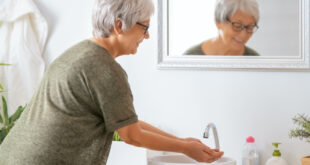Breast lumps are common, especially in women ages 30 to 50. A number of conditions can result in a lump or lumps in your breast. Most of these conditions are harmless or of minor concern. More than half of all women experience fibrocystic changes — lumpy, thickened tender areas in the breasts — as they get older. Multiplying cells within breast glands and overgrowth of fibrous tissue (fibrosis) in the breasts' supporting tissue cause fibrocystic changes. Large or small cysts can result when such overgrowth blocks ducts and prevents secretions from draining. Breast cancer can be located near the surface, or deeper inside the breast, close to the chest wall. It can also occur in the armpit area, where there is more breast tissue.
There are no muscles in the breasts, but muscles lie under each breast and cover the ribs. These normal structures inside the breasts can sometimes make them feel lumpy. Such lumpiness may be especially noticeable in women who are thin or who have small breasts. The female breast is a complex gland that is made up of several different types of tissue.
Symptoms of Breast lumps
Nipple discharge that occurs without the nipple being touched can be caused by benign (non-cancerous) growths. Examples of these growths are intraductal papillomas (non-cancerous growths that protrude into the milk ducts) and dilated areas of milk ducts (ductal ectasia). Nipple discharge can also be caused by cancer of the breast tissue. Because nipple discharge can be a sign of cancer, it needs to be evaluated by a doctor.
Changes in body weight, or natural changes that come with age may affect the size or shape of the nipples. However, if a nipple retracts (pulls in) and does not easily return to its normal shape, see your doctor or a nurse practitioner for a manual exam. If there is a problem with the milk ducts which are just below the surface of the nipple and areola, then having a diagnostic mammogram or ultrasound can help diagnose the trouble.
A number of conditions other than breast cancer can cause your breasts to change in size or feel. Breast tissue changes naturally during pregnancy and your menstrual cycle. Other possible causes of noncancerous (benign) breast changes include fibrocystic changes, cysts, fibroadenomas, infection or injury.
Causes of Breast Lumps
Many possible causes exist for pain or tenderness in one of your breasts or in both breasts. Most often the pain can be attributed to harmless causes such as puberty or pregnancy. It can also be a recurrent problem for women with cyclical pain associated with the menstrual cycle. Although cancer is a major concern for most women, it is rarely the cause of isolated breast pain.
Fibroadenomas are non-cancerous lumps that feel rubbery and are easily moveable within the breast tissue. Like fibrocystic changes, they occur most often during the reproductive years. Usually, they are not tender and, except in rare cases, do not become cancerous later. A doctor may feel fairly certain from an exam that a particular lump is a fibroadenoma. The only way to be sure, however, is to remove or biopsy them.
Infections can either be a deep pocket of pus, in which the infection looks like it is growing down into the breast (an abscess), or a wider area of skin redness that spreads out (cellulitis). Body piercing in the nipple area increases the risk of breast infections that may be particularly difficult to treat.
Article by Peter Hutch









- 12 years ago